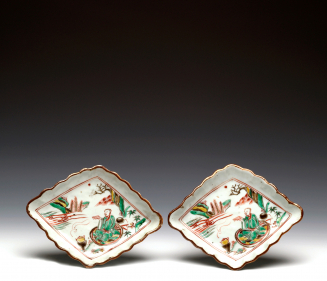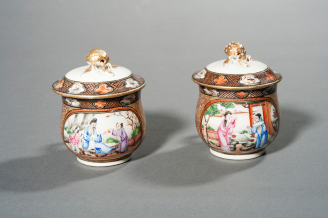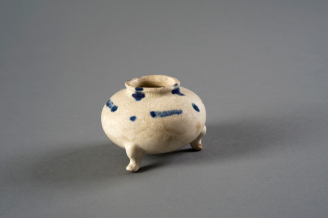Media
Objectifying China: Ming and Qing Dynasty Ceramics and Their Stylistic Influences Abroad Exploring five centuries of exchange between East and West
08 Dec 2017
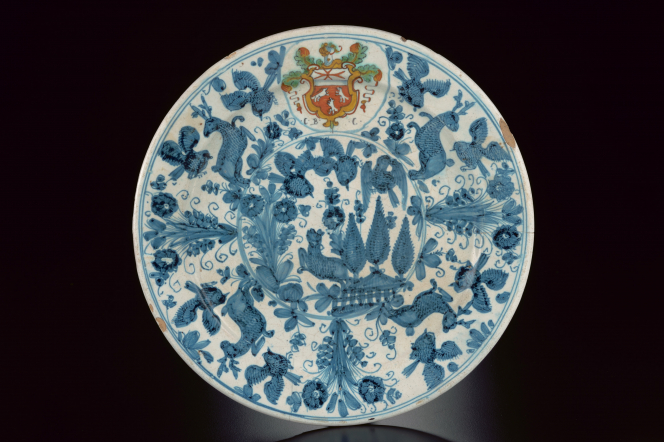
Dish with a coat of arms
Genoa, Italy, ca. 1710s
Tin-glazed earthenware, diameter 25.6 cm
Asian Civilisations Museum
2007-55829
The University Museum and Art Gallery (UMAG) of the University of Hong Kong (HKU) will present Objectifying China: Ming and Qing Dynasty Ceramics and Their Stylistic Influences Abroad from December 9, 2017 to February 27, 2018. Presented with the support of Robert Black College and objects from the collections of UMAG, the Asian Civilisations Museum, Singapore and the Hong Kong Maritime Museum, Objectifying China examines how the international trade in ceramics spread styles, forms and manufacturing technologies throughout various regions. These exchanges dramatically altered the course of Asian and European art, producing objects prized for their exotic origins, superior technology and beauty.
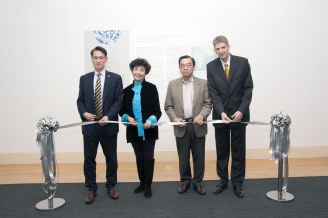
(From left) Ribbon-cutting ceremony by Vice-President and Pro-Vice-Chancellor (Global) of HKU Professor W. John Kao, Chairman of the Robert Black College Management Committee of HKU Mrs Annie Bentley, Assistant Professor of School of Economics and Finance, Faculty of Business and Economics of HKU Dr Chen Cheng and UMAG Director Dr Florian Knothe.
An opening ceremony of the exhibition was held at UMAG today (December 8). Officiating guests included Vice-President and Pro-Vice-Chancellor (Global) of HKU Professor W. John Kao, Chairman of the Robert Black College Management Committee of HKU Mrs Annie Bentley and UMAG Director Dr Florian Knothe.
A Global Industry
For thousands of years, China has provided the world with porcelain of the highest quality. Elegant and resistant to heat and moisture, Chinese porcelain of various shapes and colours was eagerly sought—and just as eagerly imitated—by craftsmen across the globe. From the sixth to twentieth centuries, Chinese kilns produced everything from magnificent display pieces for the imperial court to vast quantities of bowls and dishes intended for everyday use, as well as for export to Southeast Asia, Japan, Korea and the Islamic world.
The first Chinese porcelains did not arrive in Europe until the fourteenth century, when small numbers were presented to the ruling houses of Europe via intermediaries in the Middle East. Technologically superior to low-fired European ceramics, they were regarded as objects of rarity and luxury, and were sometimes mounted with silver or gold to emphasise their preciousness. By the early sixteenth century—after Portugal had established trade routes to China—Chinese potters began to produce large amounts of porcelain specifically for export to Europe as part of a larger trade in silk, spices, tea and lacquer.
Like all successful inventions, porcelain inspired competition. Kilns in Asia had been producing a wide variety of ceramics in imitation of Chinese wares for centuries, but European attempts to imitate porcelain were unsuccessful until Johann Böttger unlocked the process in Meissen, Germany in 1709. By the end of the century, factories across Europe were producing hybrid works that combined the best features of European and Asian design.
Details of the Exhibition
Period: December 9, 2017 (Saturday) to February 27, 2018 (Tuesday)
Opening Hours:
09:30 – 18:00 (Monday to Saturday)
13:00 – 18:00 (Sunday)
Closed on University and Public Holidays
Venue: 1/F T.T. Tsui Building, UMAG, HKU, 90 Bonham Road, Pokfulam
Tel/Email: (852) 2241 5500 (General Enquiry) / [email protected]
Admission: Free
Website: http://www.umag.hku.hk/en/
Connect with UMAG on social media:
Facebook: https://www.facebook.com/umag.hku
Twitter: https://twitter.com/UMAG_HKU
Instagram: #MingDynastyCeramics, #QingDynastyCeramics, #UMAG
Weibo: @香港大學美術博物館UMAG
About University Museum and Art Gallery of the University of Hong Kong (UMAG)
UMAG was founded in 1953 as the Fung Ping Shan Museum. It was originally established as the Fung Ping Shan Library in 1932 in honour of its benefactor. For more information on UMAG, please click here.
Media enquiries
UMAG Senior Communications Officer Ms Elena Cheung, Tel: (852) 2241 5512, Email: [email protected]
UMAG Programme Assistant Ms Chelsea Choi, Tel: (852) 2241 5509, Email: [email protected]
Pair of ko-akae dishes
China (Ming dynasty), Tianqi period, 1621–27
Porcelain with overglaze enamels, width 18.5 cm
HKU.C.1978.0627

